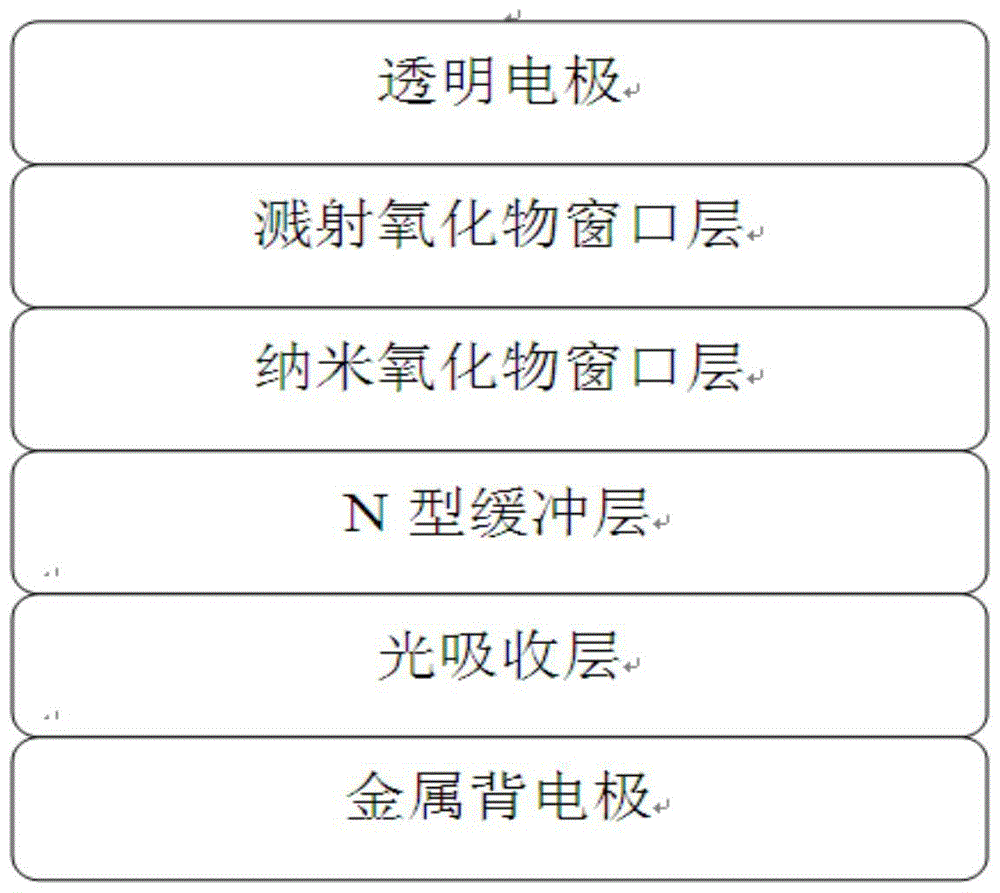A double-layer structure window layer applied to high-efficiency thin-film photovoltaic cells
A double-layer structure and window layer technology, applied in circuits, electrical components, sustainable manufacturing/processing, etc., can solve the problems of increasing photogenerated electron-hole recombination, low conversion efficiency, reducing device open circuit voltage and fill factor, etc.
- Summary
- Abstract
- Description
- Claims
- Application Information
AI Technical Summary
Problems solved by technology
Method used
Image
Examples
Embodiment Construction
[0019] Preferred embodiments of the present invention will be described in detail below in conjunction with the accompanying drawings.
[0020] Such as figure 1 As shown, it is a structural schematic diagram of a copper indium gallium selenide photovoltaic device using a double-layer structure window layer. The device comprises: a metal back electrode 1; a copper indium gallium selenide light absorbing layer 2; an N-type buffer layer 3; a double-layer structure window layer 4, the window layer includes a nano-zinc oxide layer prepared by a solution method and a high-density zinc oxide layer prepared by a vacuum sputtering method. a dense zinc oxide layer; and a transparent conductive substrate 5 .
[0021] The metal back electrode 1 is generally aluminum, but not limited thereto, and also includes gold, silver, copper, titanium, chromium, molybdenum and other metals. Above the metal electrode 1 is a light absorbing layer 2 with a thickness between 0.1-10um, made of lead sele...
PUM
| Property | Measurement | Unit |
|---|---|---|
| thickness | aaaaa | aaaaa |
| thickness | aaaaa | aaaaa |
| thickness | aaaaa | aaaaa |
Abstract
Description
Claims
Application Information
 Login to View More
Login to View More - R&D
- Intellectual Property
- Life Sciences
- Materials
- Tech Scout
- Unparalleled Data Quality
- Higher Quality Content
- 60% Fewer Hallucinations
Browse by: Latest US Patents, China's latest patents, Technical Efficacy Thesaurus, Application Domain, Technology Topic, Popular Technical Reports.
© 2025 PatSnap. All rights reserved.Legal|Privacy policy|Modern Slavery Act Transparency Statement|Sitemap|About US| Contact US: help@patsnap.com


